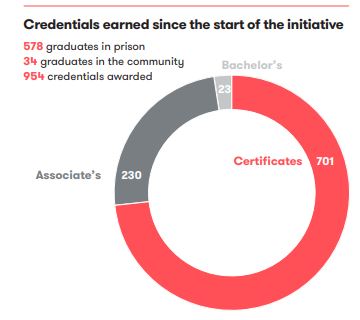“How did Tone go from being an impulsive and often violent young man, always ready to draw his gun, to a mature, successful, tax-paying businessman and a model for youth growing up behind him in the Bronx? Tone would tell you that the most important factor was going to college while he was in prison” (Lagemann, E. 2015)
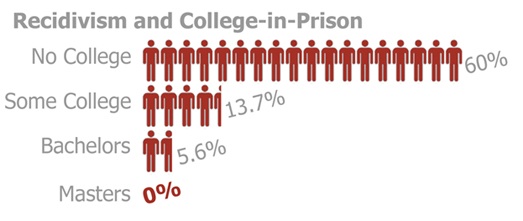
A college education is one of, if not the most important factors in lowering the chances of going to prison and/or returning to prison. If prison was truly about rehabilitation and not just locking people up and punishing them, it would make sense to offer access to the number one most important factor in keeping people from returning to prison. “Among Bard alums, who have earned a degree in prison, only 2% have returned (to prison)” (Lagemann, E. 2015). Bard is one of a small amount of college in prison programs. Lagemann points out that “College-in-prison programs have existed in various forms in the United States since the 19th century. But today, they are relatively rare” (2015). So what happened? The “tough on crime” propaganda of the nineties happened.
“The 1994 crime bill signed by President Bill Clinton banned incarcerated students from receiving federal student aid. That left it up to states and colleges to figure out the best way to pay for these programs. Many collapsed in the law’s wake” (Smith, 2018).
Luckily there are still some college in prison programs like Bard Prison Initiative in NY, Sinclair college program in Michigan, many in California, and the one through Walla Walla Comunity College here in Washington. Also, the introduction of the “Second Chance Pell Grant” which Obama administration launched in 2015 has been thoroughly helpful. This program ” gives colleges and the U.S. Department of Education flexibility to award federal aid to incarcerated students” (Smith, 2018). The establishment of Second Chance Pell Grant is a good indicator that things are starting to move in a better direction for prisoners who want to better their circumstances when they get out by getting a college education while still in prison.
It only makes sense that we do our best to return inmates back to the outside with the as much of a foundation as we can give them and a good chance as possible to make it out there and not return to prison in a few years as so many do. “Two-thirds of job postings will require some level of post-secondary education by 2020” (Smith, 2018). How do we expect prisoners to succeed upon release with stats like that and no college education or at least a jump on it?
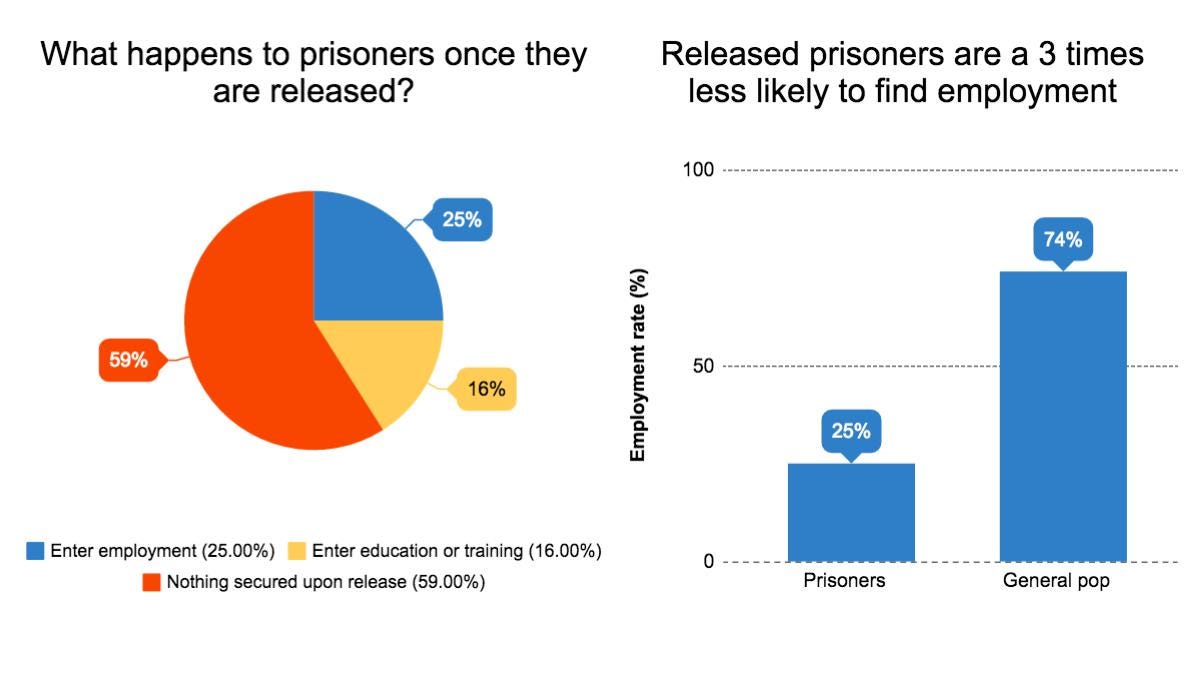
Educating inmates saves tax dollars that can be put to use in other ways by significantly reducing recidivism. Estimated cost of housing an inmate ranges from $24,00 to $160,00. If the cost of educating an inmate is $1,950, at a prison that $24,870 spending that $1,950 could save $22,920 per year per inmate if they do not return to prison. Some studies estimate $5 saved for every $1 spent on prison education. (Smith, 2018)
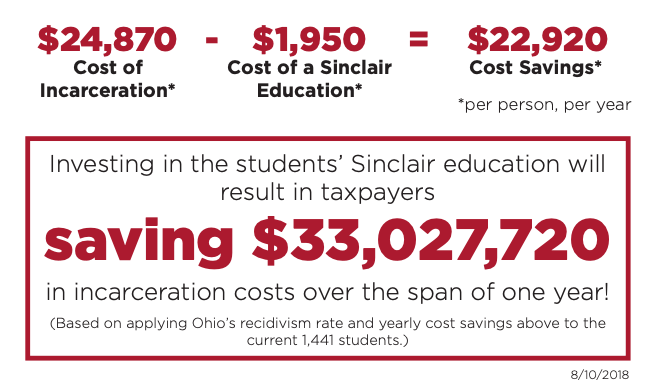
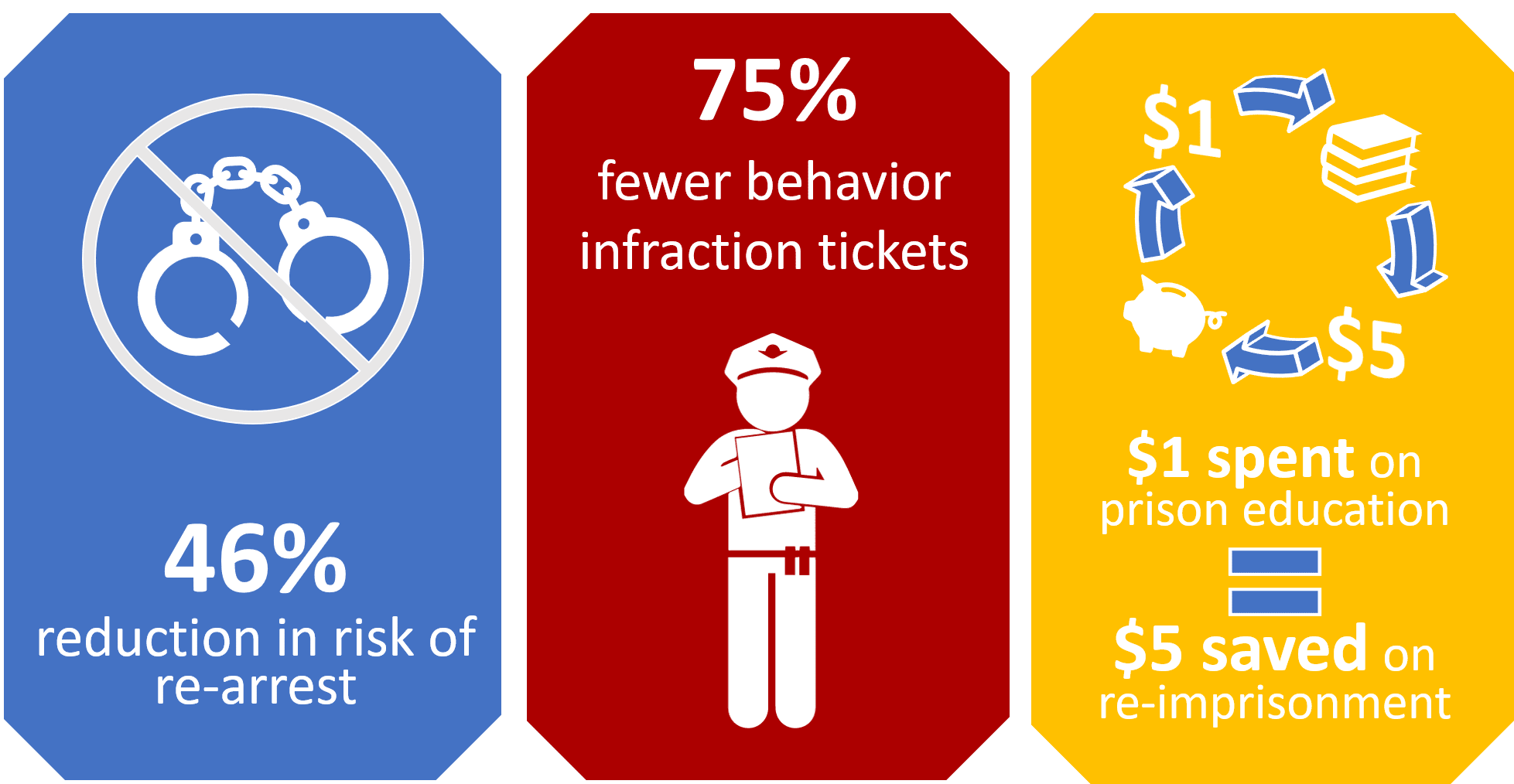
In 1995 the state of Washington stopped funding Associates of Arts degree programs at Walla Walla and other State Penitentiaries. In September of 2008 they finally started the program up again. While these programs were stopped an inmate wrote a letter to Warren Buffett explaining that they needed funding for college-level classes at prison. Warren sent the letter to his sister Doris who believed that higher education would be a bridge to success for offenders who are capable of doing that level of work. She started the Sunshine Lady Foundation to help start up these programs. It is found that each year of Education decreases recidivism. The increased cost of educating a prisoner while in prison is offset by decreased cost of holding them at a prison as they show a 50% decrease in reentry after education. Some of the instructors that have taught at the prison as well as the Community College continually say that the students at the prison are more Earnest and better prepared for class than students at the regular Community College. Inmates have also expressed how the college programs have increased camaraderie of prisoners.
As we saw in the eighties and nineties, with the increase of tough on crime politics, many people disagree with the idea of giving college education to prisoners. Many argue that prison is about punishment and people who have made their way into the prison system do not “deserve” free education. If you agree with the Idea that prison is about punishment it makes sense to not help them in any way. The problem is, simply punishing people might not be working. We have the highest per-capita incarceration rate in the world. If a one sided punishment approach was working, this would not be. Maybe it is time we use a more rehabilitative approach to the prison system. Giving people who end up in prison support and opportunities to better their situations seems like it is at least worth a try. Then we can at least compare systems and know which in actuality works better.
References
Lagemann, E. (2015). 2015 AERA Distinguished Lecture: College in Prison: A Cause in Need of Advocacy and Research. Educational Researcher, 44(8), 415-420.
Smith, Ashely. (2018). Momentum for Prison Education. Retrieved from
https://www.insidehighered.com/news/2018/11/06/colleges-push-more-resources-support-prison-education-programs
Washington’s College in Prisons Program. (n.d.). Retrieved from
https://www.sbctc.edu/colleges-staff/programs-services/prisons/default.aspx

